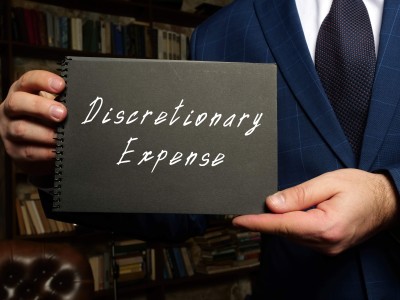Each year, hundreds of millions of dollars are spent on capital projects so tiny they fly under the corporate radar.
Around 5-10% of the budgets approved for capital projects are siphoned off by site managers with urgent projects that hadn't been forecast at the beginning of the year and are too small to go through the heartache of applying for capital budget approval as individual projects.
The problem is not where this money is spent. The vast majority of the work it funds is essential. The site absolutely needed that new platform or bigger pump. And site managers are best placed to identify and undertake the work.
The problem is the workarounds the business has developed to access these funds – and the total lack of oversight that comes with them.
If your company spends $100 million per year on capital projects, you may have up to $5 million of discretionary funds needed to allocate for unforecast small projects, which are extremely difficult to account for.
Common workarounds for unexpected projects
Over a period of years, businesses develop numerous nifty workarounds to obtain the funds needed to keep sites and plants running, especially for unexpected projects. Some of these include:

- The dummy project:
Some companies tacitly acknowledge the issue by putting a dummy project into the portfolio, creating a ‘bucket of money' that can be used to deliver minor ad-hoc projects during the year as required.
While this at least makes it easy for businesses to understand how much they are spending on ‘rats and mice' projects, it doesn't help with accountability.
Dribs and drabs of this discretionary spending appear on hundreds of spreadsheets.
It makes it a really messy budget process for the people trying to work out what's been spent where – and whether that expenditure is supporting strategic priorities or the right programs funded.
- The cream on top:
Project managers often pad the budgets of bigger projects by adding ten percent on top.
This makes it simple to find the funds for unforeseen, minor projects. But it also obscures how funds are being used and creates a risk of those dollars being used to fill gaps and cover up project overruns. This completely undermines the project governance controls.
- The spurious line item:
Sometimes, site managers use a line item on an active large project to fund smaller projects, or they use their OpEx budget as discretionary funding to initiate small projects and then transfer the funds back to CapEx. Because this all occurs out of sight, there's no aggregate view of where the money goes.
The more portfolio managers try to put a stop to these workarounds, the more creative the business becomes at finding unofficial discretionary funding policies that accommodate small projects and meet local needs. The answer is not to stop small projects from being able to receive discretionary funds. Access to money is genuinely needed. The workarounds just don't align with modern governance practices.
The answer? Formalise and normalise discretionary funds.

Many project engineers and portfolio managers have considered setting up an official discretionary fund that can be proportionally allocated to site managers.
This discretionary funding would operate on an annualised ‘use it or lose it' basis, with site managers able to bank unspent funds to use on other small projects throughout that financial year.
The reason no one does this is that in a spreadsheet world, it's just too hard. Control is next to impossible.
It would be a full-time job getting a clear picture from potentially thousands of constantly updating excel spreadsheets and monitoring who receives discretionary funding.
But now, capital project management platforms like CAPEXinsights enable discretionary funds to be allocated and visible at the click of a mouse, with an appropriate process to wrap a schedule of authority around them.
"This is critical to prevent discretionary funds from being used to cover up overspend or initiate large or strategic projects"
On a digital project management platform, site managers draw down on their discretionary funding and log their use. At any time, they can easily see how much is left.
More importantly, portfolio managers gain an aggregated view of the total discretionary fund in real-time, with the ability to drill down to see where discretionary funding has been spent and on what.
It's an elegant solution that gives site managers a real budget and the freedom to do what's best, portfolio managers proper oversight of all spend, and organistions comfort that they can account for 100% of their capital project budget.
For further information about managing discretionary funds wisely or to have a personalised demonstration of our product, please don’t hesitate to reach out to us.